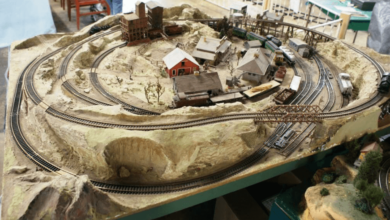how to make vanilla ice cream

Gathering Your Ice Cream Ingredients
Getting started with homemade vanilla ice cream means you need the right stuff. It’s not just about throwing things in a bowl and hoping for the best. Think of it like setting up a small business; you wouldn’t start a candy store franchise without the proper supplies, right? The same applies here. You need good ingredients to make good ice cream.
High-Quality Dairy for Creaminess
This is where the magic starts. You’ll want to use a good amount of heavy cream and whole milk. Using low-fat stuff just won’t give you that rich, smooth texture we all love. Some recipes might call for half-and-half, but for that truly decadent feel, stick with the heavy cream. It’s the fat content that really makes the difference in how creamy your ice cream turns out. Don’t skimp here if you want the best results.
Pure Vanilla Extract: The Heart of Flavor
This is non-negotiable. You absolutely need pure vanilla extract, not the imitation stuff. The difference in taste is huge. If you can get your hands on a vanilla bean, even better! You can split it open and scrape out those tiny black specks. It adds a really authentic, deep vanilla flavor that extract alone can’t quite match. It’s like the difference between a basic vanilla flavor and something you’d find at a specialty shop.
Sweeteners and Stabilizers
Sugar is obviously needed for sweetness, but it also helps keep the ice cream from freezing too hard. Granulated sugar is standard, but some people like to use a mix, maybe with a little corn syrup or honey for a softer texture. You might also see ingredients like cornstarch or egg yolks listed. These act as stabilizers, helping to prevent ice crystals from forming and keeping the texture smooth. Think of them as the glue that holds your ice cream together.
Picking the right ingredients is the first big step. It sets the stage for everything else. If you start with subpar items, your final product will likely reflect that. It’s worth the extra trip to the store for the good stuff.
It’s important to have everything ready before you start mixing. You don’t want to be scrambling for an ingredient halfway through the process. Having your measurements precise will also help a lot, especially when you’re first learning. It’s a bit like following a recipe for a new product in a franchise – precision matters.
Mastering the Custard Base
Creating a truly great vanilla ice cream starts with a solid custard base. This isn’t just about mixing ingredients; it’s about building a foundation for that rich, creamy texture we all love. Getting this right means your ice cream will be smooth, not icy, and packed with flavor. It’s a step that separates good homemade ice cream from the truly exceptional, the kind you might even find at a successful ice cream franchise.
Tempering Egg Yolks for Smoothness
Tempering egg yolks is probably the most important part of making a custard base. If you just dump the hot milk into the eggs, you’ll end up with scrambled eggs in your ice cream, and nobody wants that. The trick is to slowly introduce the hot dairy mixture to the beaten egg yolks, whisking constantly. This gradually raises the temperature of the yolks without cooking them. You want to add just a little bit of the hot liquid at first, whisk it in well, then add a bit more, and so on, until the yolks are warm. Then, you can pour the warmed yolk mixture back into the main pot of dairy.
Infusing Vanilla into the Dairy
While the dairy is heating, this is your chance to really get that vanilla flavor in there. If you’re using a vanilla bean, split it lengthwise and scrape out those tiny seeds. Toss both the seeds and the pod into the milk and cream mixture. Let it simmer gently for a bit. This allows the vanilla to really infuse its flavor into the liquid. If you’re using extract, you’ll add that later, after the base has cooled a bit, to preserve its delicate flavor. Some people even like to add a bit of vanilla bean paste for extra visual appeal, like those little black specks you see in premium ice cream. It makes you wonder if places that sell something like cookie monster ice cream start with a similar vanilla base.
Chilling the Base Properly
Once your custard base is cooked and the eggs are tempered, it needs to chill completely. This usually means putting it in the refrigerator for at least 4 hours, but overnight is even better. A cold base churns more efficiently and freezes faster in your ice cream maker, which helps prevent large ice crystals from forming. This is key to getting that super smooth texture. You can speed up the chilling process by placing the bowl of custard into an ice bath, stirring occasionally, before refrigerating. A well-chilled base is the secret to avoiding that grainy texture.
Think of the custard base as the canvas for your ice cream masterpiece. A smooth, well-flavored base makes all the difference, whether you’re aiming for classic vanilla or something more adventurous. It’s worth taking your time with this step.
If you’re thinking about starting your own business, exploring an ice cream franchise could be a good idea, but mastering the basics like this custard base is a great first step for anyone, even if you’re just making ice cream at home. It’s a skill that can be applied to many different flavors, not just vanilla. It’s also a good foundation if you ever consider opening a candy store franchise, as many confections share similar base principles.
The Churning Process Explained
So, you’ve got your chilled custard base ready to go. Now comes the magic part: churning! This is where your liquid base transforms into that glorious, creamy ice cream we all love. It’s not just about freezing; it’s about incorporating air and keeping ice crystals small.
Using Your Ice Cream Maker
Most home ice cream makers work by chilling the base while a paddle or dasher churns it. This constant motion scrapes the sides of the freezing bowl, preventing large ice crystals from forming and whipping air into the mix. It’s pretty straightforward: pour your cold base into the pre-frozen bowl of your machine, turn it on, and let it do its thing. The time it takes can vary depending on your machine and the base, but usually, it’s around 20-30 minutes. You’re looking for a soft-serve consistency.
Achieving the Perfect Texture
Texture is everything in ice cream, right? During churning, the goal is to get the ice cream to freeze quickly while being constantly agitated. This rapid freezing and mixing is what creates those tiny ice crystals that give ice cream its smooth mouthfeel. If it churns too slowly or not enough, you’ll end up with a grainy, icy product. Think about how a good scoop just glides – that’s the result of proper churning. It’s a bit like how a successful candy store franchise needs consistent product quality.
Understanding Freezing Times
Freezing times aren’t set in stone. They depend on a few things: how cold your base was to start, the efficiency of your ice cream maker, and even the ambient temperature of your kitchen. A general guideline is that it takes about 20 to 30 minutes for the mixture to reach that soft-serve stage. Don’t be tempted to over-churn, though; once it’s thick, it’s time to move on to the next step. Over-churning can sometimes make the ice cream too dense or even start to melt it again from the friction.
The churning process is really about controlling ice crystal size. The faster the base freezes while being stirred, the smaller the crystals, and the smoother your ice cream will be. It’s a delicate balance.
Adding Flavor Enhancements
Now that you’ve got a solid vanilla base, it’s time to think about making it truly special. We’re talking about those little touches that take your homemade ice cream from good to unforgettable. It’s not just about the flavor, but the whole experience.
Vanilla Bean Specks for Visual Appeal
Sure, pure vanilla extract is great, but have you ever seen those beautiful little black specks in premium vanilla ice cream? Those are vanilla bean seeds! If you want to add a visual wow factor, consider using a real vanilla bean. You can split a vanilla bean lengthwise and scrape out the seeds, then add both the seeds and the pod to your dairy mixture while it’s heating. This infuses a more complex vanilla flavor and gives your ice cream that artisanal look. It’s a simple step that really makes a difference.
Optional Mix-ins for Variety
This is where you can really get creative. Think about what you love! Chocolate chips are a classic, of course. Maybe some chopped nuts for crunch? Or perhaps you’re curious about what is cookie monster ice cream – that usually involves blue coloring and chunks of chocolate chip cookie dough and chocolate cookies. You could also try swirls of caramel or fudge. Just remember to add mix-ins towards the end of the churning process so they don’t get completely pulverized. A good rule of thumb is to add them during the last few minutes of churning.
Considering a Franchise Opportunity
If you’re really passionate about ice cream and have a knack for creating delicious flavors, you might even consider turning this hobby into a business. Exploring an ice cream franchise can be a way to get into the market with a proven business model. It’s a big step, but if you love making people happy with great treats, it’s something to think about. It’s not quite the same as opening a candy store franchise, but the principles of creating a beloved brand are similar.
Making ice cream at home is a rewarding process, and adding these extra touches can make it even more enjoyable. Don’t be afraid to experiment with different combinations to find your personal favorites. It’s all part of the fun!
Freezing and Storing Your Creation
So, you’ve churned your homemade vanilla ice cream to perfection. Now comes the part where you let it get nice and firm. This stage is often called ‘hardening.’ It’s not just about making it scoopable; it’s about letting the ice crystals settle and the flavors meld even further. The goal is a smooth, creamy texture without any icy bits.
Hardening the Ice Cream
After churning, your ice cream will have a soft-serve consistency. You need to get it into a container and into the freezer. A shallow, airtight container works best because it helps the ice cream freeze faster and more evenly. Pressing a piece of parchment paper or plastic wrap directly onto the surface of the ice cream before sealing the container can also help prevent ice crystals from forming on top. Pop it into the coldest part of your freezer for at least 4-6 hours, or preferably overnight.
Proper Storage for Freshness
Keeping your ice cream fresh is all about minimizing air exposure and temperature fluctuations. Always use an airtight container. If you’re not going to eat it all within a week or two, consider using a freezer-safe bag or wrapping the container tightly with plastic wrap and then foil. This double-layer protection is key. Avoid storing it in the freezer door, as the temperature changes every time you open it. Think about how a successful ice cream franchise keeps its product perfect – it’s all in the storage.
Serving Tips for the Best Experience
Before you scoop, let the ice cream sit at room temperature for a few minutes. This makes it much easier to serve and improves the texture. A warm scoop or a quick dip in hot water can help. If you’re wondering what is cookie monster ice cream, it’s typically a blue-colored vanilla base with chocolate chip cookie pieces and sometimes cookie dough. It’s a fun one! For those interested in the business side, exploring an ice cream franchise or even a candy store franchise can be a sweet venture, but mastering your own recipe is the first step.
Troubleshooting Common Ice Cream Issues
Making homemade ice cream is usually pretty straightforward, but sometimes things don’t go quite as planned. Don’t worry, most common issues have simple fixes.
Preventing Ice Crystals
Ice crystals are the enemy of smooth ice cream. They happen when water in the base freezes into larger ice particles instead of staying incorporated. A few things can cause this. Too much water in your base is a big one, so make sure you’re measuring your liquids accurately. Also, if the base isn’t chilled enough before churning, it takes longer to freeze, giving ice crystals more time to form. A fast freeze is your best friend for preventing them. Over-churning can also break down the fat structure, leading to a less stable mix that’s prone to crystallization. If you’re thinking about the business side of things, understanding this is key, whether you’re running your own shop or considering an ice cream franchise.
Achieving Richness and Density
Sometimes, ice cream can end up too airy or lacking that satisfying richness. This often comes down to the fat and sugar content. Fat from cream and egg yolks gives ice cream its smooth, dense texture and rich flavor. If your recipe is too low in fat, it won’t be as dense. Sugar does more than just sweeten; it also lowers the freezing point of the base, which helps keep it from freezing solid and contributes to a smoother texture. Too little sugar means a harder, icier product. If you’re aiming for a specific flavor profile, like what is cookie monster ice cream, you’ll need to balance the base ingredients with the mix-ins to get the right texture and taste.
Exploring Ice Cream Franchise Models
If you’ve gotten really into making ice cream and are thinking about turning it into a business, looking into an ice cream franchise can be a smart move. Franchises offer a proven business model, brand recognition, and support, which can be a big help when starting out. It’s a different ballgame than just making ice cream at home, but the principles of good ingredients and proper technique still apply. You might even find yourself exploring different types of franchises, from traditional scoop shops to more specialized operations, perhaps even ones that focus on unique flavors or concepts, like a candy store franchise that also sells ice cream.
Enjoy Your Homemade Vanilla Ice Cream!
So there you have it. Making your own vanilla ice cream might seem like a lot at first, but it’s really not that bad. You get to control exactly what goes in, and the taste is just so much better than anything from the store. Plus, think of the bragging rights! It’s a fun thing to do, maybe on a weekend or when you have friends over. Don’t be afraid to experiment a little next time, but for now, just enjoy this classic, creamy treat you made yourself. It’s pretty satisfying, right?






